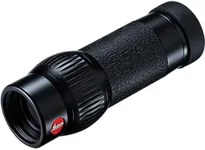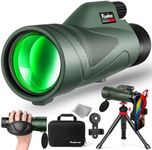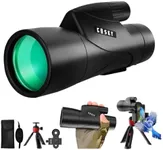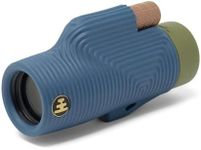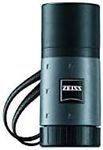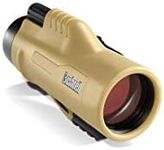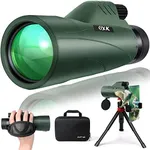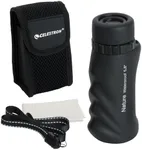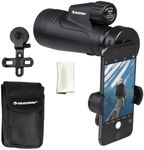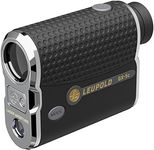Buying Guide for the Best Monoculars
Choosing the right monocular can make a big difference in how much you enjoy using it, whether you're birdwatching, hiking, attending sports events, or just exploring nature. The key is to understand what features matter most for your intended use. By learning about the main specifications, you can match a monocular to your needs and avoid paying for features you won't use or missing out on ones you really need.MagnificationMagnification tells you how much closer an object will appear compared to your naked eye. For example, a monocular with 8x magnification makes things look eight times closer. Lower magnification (like 6x to 8x) is easier to hold steady and gives a wider view, which is great for general use and tracking moving subjects. Higher magnification (10x and above) brings distant objects even closer but can make the image shakier and the field of view narrower. If you want to observe wildlife or landscapes, moderate magnification is usually best. For detailed viewing of distant objects, higher magnification might be more suitable, but you may need a steady hand or a tripod.
Objective Lens DiameterThe objective lens diameter, measured in millimeters, is the size of the front lens. A larger lens lets in more light, which makes the image brighter and clearer, especially in low-light conditions like dawn or dusk. Smaller lenses make the monocular lighter and more compact, but they may not perform as well in dim light. If you plan to use your monocular in bright daylight or want something very portable, a smaller lens (around 20-25mm) is fine. For better performance in low light, look for a larger lens (30mm or more), but keep in mind it will be bulkier.
Field of ViewField of view is how wide an area you can see through the monocular, usually described as the width in feet or meters at a certain distance (like 1000 yards or meters). A wider field of view makes it easier to spot and follow moving subjects, which is helpful for birdwatching or sports. A narrower field of view gives you a more zoomed-in image but makes it harder to find and track things. If you want to observe fast-moving or unpredictable subjects, choose a monocular with a wider field of view. For stationary or distant objects, a narrower field may be acceptable.
Close Focus DistanceClose focus distance is the shortest distance at which the monocular can focus clearly. This is important if you want to look at things up close, like insects or flowers. A shorter close focus distance (under 2 meters) is great for detailed observation of nearby objects. If you only plan to look at distant scenery or wildlife, this spec is less important.
Weight and SizeThe weight and size of a monocular affect how easy it is to carry and use. Smaller, lighter monoculars are more portable and convenient for travel or quick use, but they may have smaller lenses and less powerful optics. Larger monoculars can offer better image quality and brightness but are heavier and may be less comfortable to hold for long periods. Think about how and where you'll use your monocular—if you want something to slip in your pocket, go for a compact model; if image quality is your top priority and you don't mind a bit more bulk, a larger monocular may be better.
Waterproof and FogproofWaterproof and fogproof features protect your monocular from moisture, rain, and internal fogging caused by temperature changes. This is especially important if you plan to use your monocular outdoors in varying weather conditions. If you'll be hiking, boating, or using your monocular in damp environments, look for models that are sealed and filled with nitrogen or argon gas to prevent fogging. For indoor or fair-weather use, this feature is less critical.
Eye ReliefEye relief is the distance you can hold the monocular from your eye and still see the full image. This is especially important for people who wear glasses. Longer eye relief (usually 15mm or more) makes it more comfortable to use with glasses. If you wear glasses, check for a monocular with generous eye relief; if not, this spec is less crucial.
